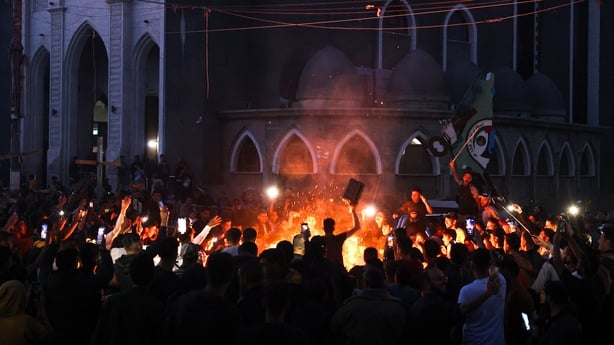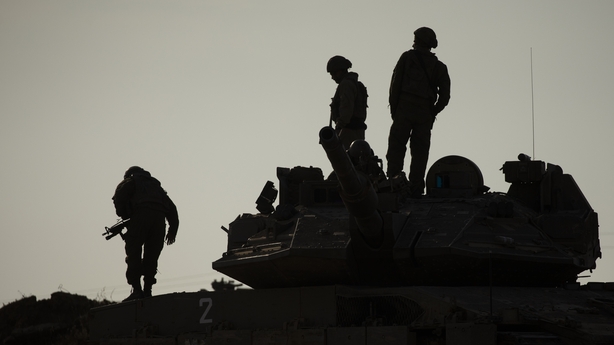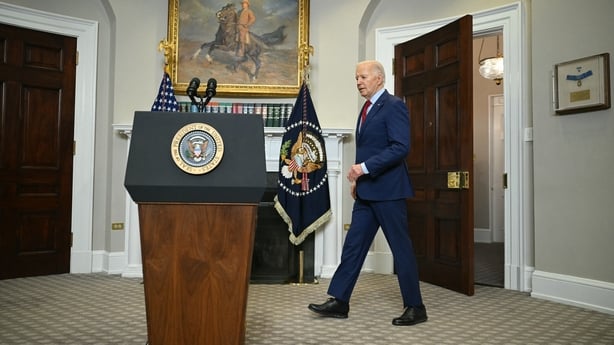On the whole, things had been looking hopeful.
US Secretary of State Antony Blinken described Israel’s offer to Hamas in the latest round of ceasefire negotiations as “extraordinarily generous”.
“The only thing standing between the people of Gaza and a ceasefire is Hamas,” Mr Blinken said last week.
When Hamas officials landed in Cairo for negotiations with Egyptian and Qatari mediators, they said they were looking “with great positivity” towards Israel’s proposal.
And, yesterday, there was an apparent breakthrough. Hamas leader Ismail Haniyeh told the mediators that the Palestinian group had accepted the deal, ending a days-long impasse.
The news was met with jubilation in Gaza, where crowds chanted joyously.
But, 24 hours later, a ceasefire somehow still seems out of reach.
An Israeli official accused Hamas of orchestrating a “ruse” intended to make Israel look like it is the one standing in the way of a ceasefire.
And the announcement came shortly after Israel ordered the evacuation of certain areas of Rafah. For obvious reasons, many interpreted the order as a harbinger of a full ground invasion of the southern Gaza city.
Was Hamas trying to stop Israel in its tracks?

Without knowing the finer details of what Hamas agreed to, it has been hard to grasp what exactly is going on.
It’s particularly confounding for one reason: The mediators knew Israel’s red lines and, though Israel chose not to send a delegation to Cairo, its interests in the Egyptian capital were meant to be broadly represented by US officials.
If Hamas had indeed agreed to what the mediators put on the table, why is it unacceptable to Israel?
In recent weeks, the negotiations have focused on several things, such as the withdrawal of Israeli forces from heavily populated areas of Gaza, the provision of humanitarian aid, and, crucially, the exchange of Israeli hostages in Gaza for Palestinians in Israeli jails.
But the major difficulty has been in bridging a seemingly unbridgeable gap between Israel and Hamas – about the duration of the ceasefire.
Hamas wants the war to end permanently, while still maintaining control of Gaza.
Israel is eager to secure the release of hostages, but it is extremely reluctant to agree to a permanent ceasefire, believing this would mean abandoning its goal of destroying Hamas.
While both sides seem to agree that the deal should pave the way for a so-called “sustainable calm”, they cannot agree on a precise definition.
Hamas has consistently vetoed any wording that would allow for a return to fighting – warning it will not hand over Israeli hostages unless there is a clear path to a long-term cessation of hostilities.

And Israel has objected to any explicit wording that it believes would unduly tie its hands in the future.
The mediators have been tasked with finding language that does two seemingly contradictory things – giving Hamas confidence that a permanent ceasefire is in the offing, while giving Israel enough leeway such that, should it return to fighting, it would not be seen as having reneged on the agreement.
Both sides have been briefing in the hours since the Hamas announcement.
Israel contends that Hamas has stretched its proposal to “unacceptable extremes”, so much so that its officials have been describing it as akin to “a whole new proposal”.
US officials have been less strident – but they have conceded that Hamas did not simply accept the deal on the table. Rather, the group has made a reasonable counteroffer of its own.
In any case, the key sticking point does seem to be about whether the deal would lead to a permanent end to the war.
Khalil al-Hayya, a senior Hamas official, told Al Jazeera that Hamas had agreed to a multi-stage ceasefire – involving the release of hostages in three six-week phases.
The second stage, he said, would see the announcement of a complete and permanent halt to Israeli military activity in Gaza.
That’s the kind of ironclad language that Israel wants to avoid.

Israeli officials have indicated that they were caught off guard by the Hamas announcement, and have accused the US of keeping it in the dark – a suggestion that has been rebuffed by US officials.
But Mr Al-Hayya told Al Jazeera that Hamas had been given assurances by the mediators that US President Joe Biden was committed to ensuring the implementation of the agreement.
That has poisoned the atmosphere, not least because Israel seems to think the US went so far as to promise that the deal would in fact lead to a permanent ceasefire.
Whether it did isn’t clear. But what is clear is that US officials do believe this deal will precipitate the end of the war – mostly because they think Israel will find it hard to justify a return to fighting once it has been paused for six weeks.
In that context, the US is much less concerned about the inclusion of a precise definition of a “sustainable calm”. That, unfortunately, does not make this process any less torturous.
And so the negotiators will get back to the negotiating table. A team of mid-level Israeli officials arrived in Cairo for further talks in the past few hours.
But the top Israeli negotiators are staying put at home – a sign that they don’t expect any significant progress anytime soon.
Source link
 TG4 TV PC to TV
TG4 TV PC to TV
